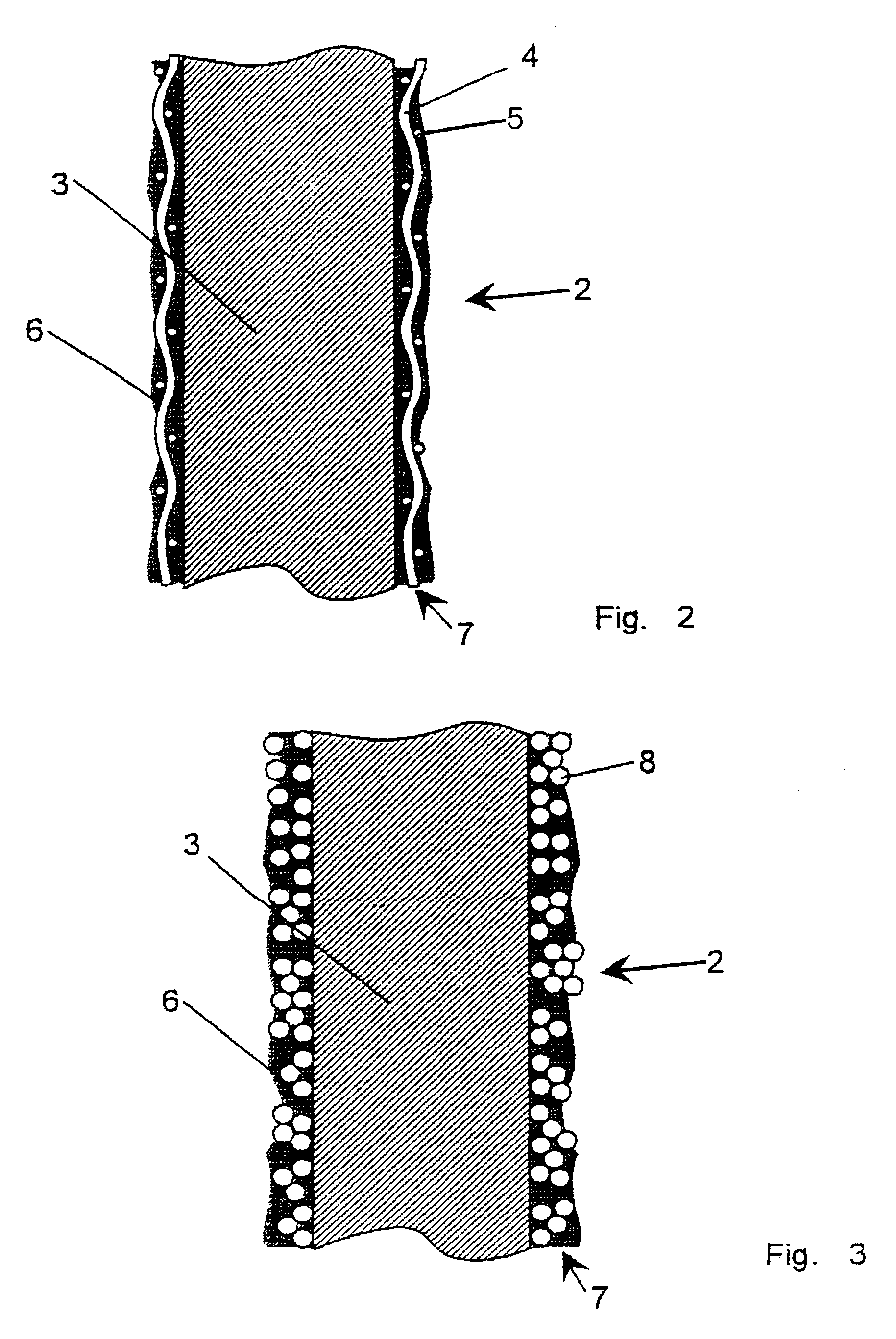Cathode for electrochemical regeneration of permanganate etching solutions
a permanganate etching solution and electrochemical technology, applied in the direction of electrical-based machining electrodes, electrode coatings, manufacturing tools, etc., can solve the problems of inability to continue the method, high cost of the method, and complicated method, so as to improve the efficiency of regeneration and reduce the electric total output , the effect of reducing the cos
- Summary
- Abstract
- Description
- Claims
- Application Information
AI Technical Summary
Benefits of technology
Problems solved by technology
Method used
Image
Examples
example
[0061]In order to manufacture a rod-shaped cathode body having a diameter of 15 mm and made from V4A steel was coated with a single layer of a TEFLON® fabric having a mesh size of 70 μm. The coating was fixed to the cathode body by means of wire rings at spacings of 2 cm respectively. The diameter of the wire was 0.6 mm. The cathode body being prepared in this way was formed by gradual increase of the electric current, as described above, a manganese dioxide coating being generated on the cathode body.
[0062]The formed cathode was immersed into a permanganate bath having a volume of 350 I. The bath had been heated to a temperature of 80° C. The cathode was inserted into an anode with a diameter of 120 mm in a regenerating device as shown in FIG. 1, the anode being mounted in the bath and being formed from a basket made of expanded metal of V4A steel. For this purpose the cathode was fitted to a carrier (not shown) into the inner compartment of the cylindrical anode in such a way that...
PUM
| Property | Measurement | Unit |
|---|---|---|
| concentration | aaaaa | aaaaa |
| temperature | aaaaa | aaaaa |
| current density | aaaaa | aaaaa |
Abstract
Description
Claims
Application Information
 Login to View More
Login to View More - R&D
- Intellectual Property
- Life Sciences
- Materials
- Tech Scout
- Unparalleled Data Quality
- Higher Quality Content
- 60% Fewer Hallucinations
Browse by: Latest US Patents, China's latest patents, Technical Efficacy Thesaurus, Application Domain, Technology Topic, Popular Technical Reports.
© 2025 PatSnap. All rights reserved.Legal|Privacy policy|Modern Slavery Act Transparency Statement|Sitemap|About US| Contact US: help@patsnap.com



